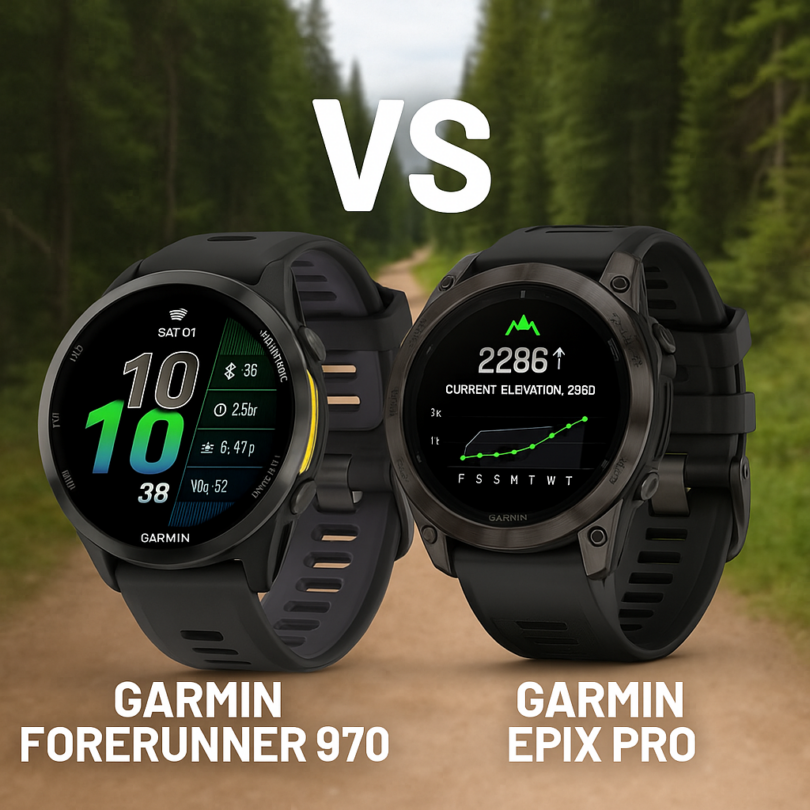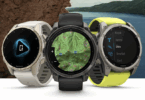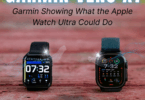Last week, the new Garmin Forerunner 970 went on sale. This was the long awaited update to the Garmin Forerunner 965 which bears many feature similarities to my watch of the last couple of years – the Garmin Epix Pro. So, I thought – “what better way to put the Garmin Forerunner 970 to the test than with a 50 mile trail race?”
The New Garmin Forerunner 970 vs the Garmin Epix Pro
The Garmin Forerunner lineup is made up of watches that are lighter in weight and less bulk than the Fenix and Instinct series of watches. They are targeted more at the runners or multi-sport athletes like those that do triathlons. The Forerunner 965 was already a great watch but it was missing out on some of the things that last year’s Fenix 8 watches had. In particular, there was one thing that made me stay with the Epix Pro instead of switching to the Forerunner 965 and that was the flashlight.
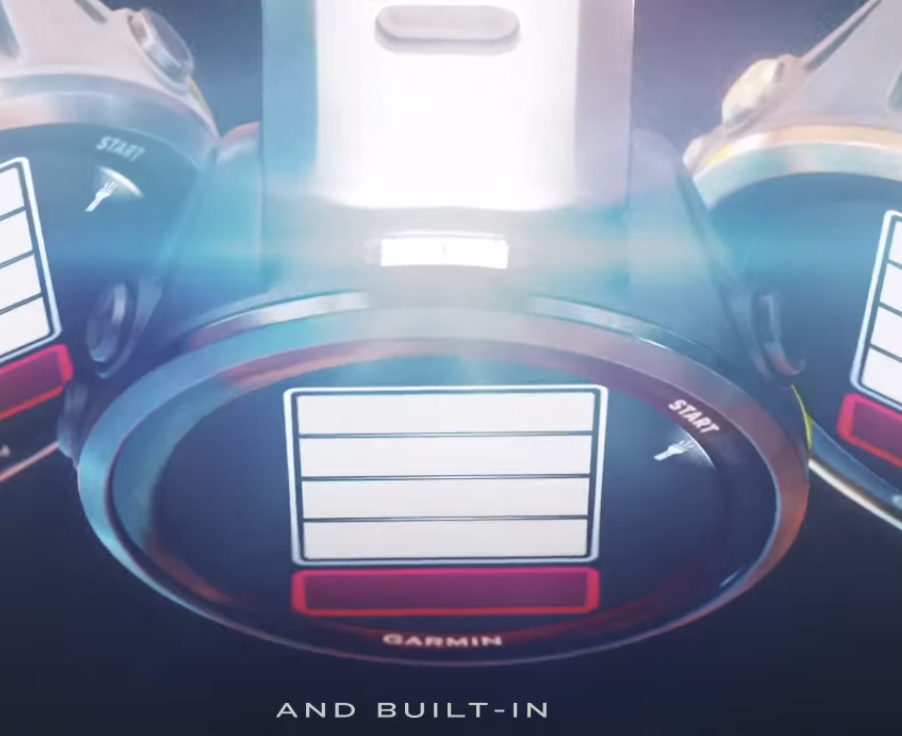
I know, that sounds stupid and if you are an Apple Watch user you are probably thinking “I have a flashlight already, what’s the big deal?” But, there is a big difference between a watch using its AMOLED display on full power with white light and the flashlight that Garmin puts on the top rim of some of their watches. I literally use mine every single day (most of the time for middle of the night bathroom runs but also for a variety of other cases). It is not only great for when you need a light but it also works for running at night by giving light with cadence to make sure drivers see you more easily.
I like the lightweight of the Forerunners but without the flashlight, there was no way I was going to switch. But, when the Garmin Forerunner 970 came out with the flashlight, I decided it was time to jump, at least to give it a try. I normally don’t keep watches for more than 2 years and I was coming right up to that with my Garmin Epix Pro so it seemed like a good time.
Again, the Garmin Epix Pro is very similar in features to the Garmin Forerunner 965 but with a more durable case and a sapphire display instead of the 965’s Gorilla Glass. I have been a huge fan of sapphire displays for years now since I have banged my Garmins against all kinds of surfaces (accidentally) and never had even a scratch. Unlike even Gorilla Glass displays.
I will do a more in-depth user review of the Garmin Forerunner 970 later but I will say that that it brings the features from the Fenix 8 (including dynamic mapping which I really wanted – great for when your Garmin makes a route and you decide to go a different way, the Forerunner 970 – unlike the Epix Pro – will dynamically update your route for you) as well as Sapphire glass and a Titanium frame to the 970. These things make it more durable yet still it maintains its slim and lightweight body.
The 50 Mile Race Test
I was pretty excited to try the Garmin Forerunner 970 out in a big race right away. In fact, given that it had just come out, I was probably one of the first runners to use it for an ultramarathon so that let me see things for myself that were not available to read about as of yet.

Me after finishing the 50 miler – Garmin Forerunner 970 on my left wrist and the Garmin Epix pro on my right.
One of the big things about going from a Fenix/Epix watch to the Forerunner is going to be battery life. The Fenix and Epix watches have much longer battery life than the Forerunner models so I was curious to see how they compared at the end of the 50 miles.
This was a trail race – a 12.5 mile loop in Hamilton, Ontario (Canada). So, there would be tree coverage so I was curious to see how the watches handled distance tracking under the trees (in this age with the current GPS chipsets, they should be fairly accurate).
Here were two things I was quite surprised about.
Battery Life of the Garmin Forerunner 970 vs Garmin Epix Pro
I used the same battery profile for both watches. That is they would auto select the best GPS system to use and the display was at reduced brightness and it would shut off when not raised. I also had the Forerunner 970 connected to my phone and it was receiving smart notifications (something that would lessen battery life, given the connectivity and also the vibration motor) but the Epix Pro was not connected (since I didn’t want double of the activity in my Garmin Connect app). Heart rate sensor was on for both (they both us the Elevate Gen 5 heart rate sensor) and blood oxygen was off.
Both watches were at 95% at the start of the race. To my surprise, at the end, both watches were at 45% of battery left. The race took me 10 hours and 48 minutes so that was better than expected with the Garmin Forerunner 970 and worse than expected for the Garmin Epix Pro. But that was undoubtedly due to the age of the Epix Pro since I used it for my 100 miler 1.5 years ago and it lasted the full 26 hours with quite a bit of juice left.
Garmin says that, according to their own testing, the settings I had would get to 23 hours on the Forerunner 970. If I extrapolated that out, it would have been very close to that estimation. The Epix Pro was off by quite a bit.
So, I was overall pleased with the Forerunner 970 being on point for the Garmin battery life estimates (which are generally pretty accurate or even a bit under stated). Now, the bad part is it won’t last me for a 100 miler. I have an extremely difficult 100+ miler coming up later this year that will take me around 36 hours to complete so I will either need to carry a small battery pack with me and charge it during the race or use a different watch like a Garmin Enduro.
GPS Accuracy
Now, here was something that surprised me. Both watches have the same GPS chips and they were set to Auto to select the best system. But, I found that the Garmin Forerunner 970 was almost spot on while the Garmin Epix Pro was off by .3 miles. In the end, it didn’t matter as far as hitting 50 miles because I ended up getting lost for about .5 mile total so that put me at 50.20 miles on the Epix Pro and I was at 50.50 on the Forerunner 970.

The Garmin Epix Pro distance from the 50 mile race
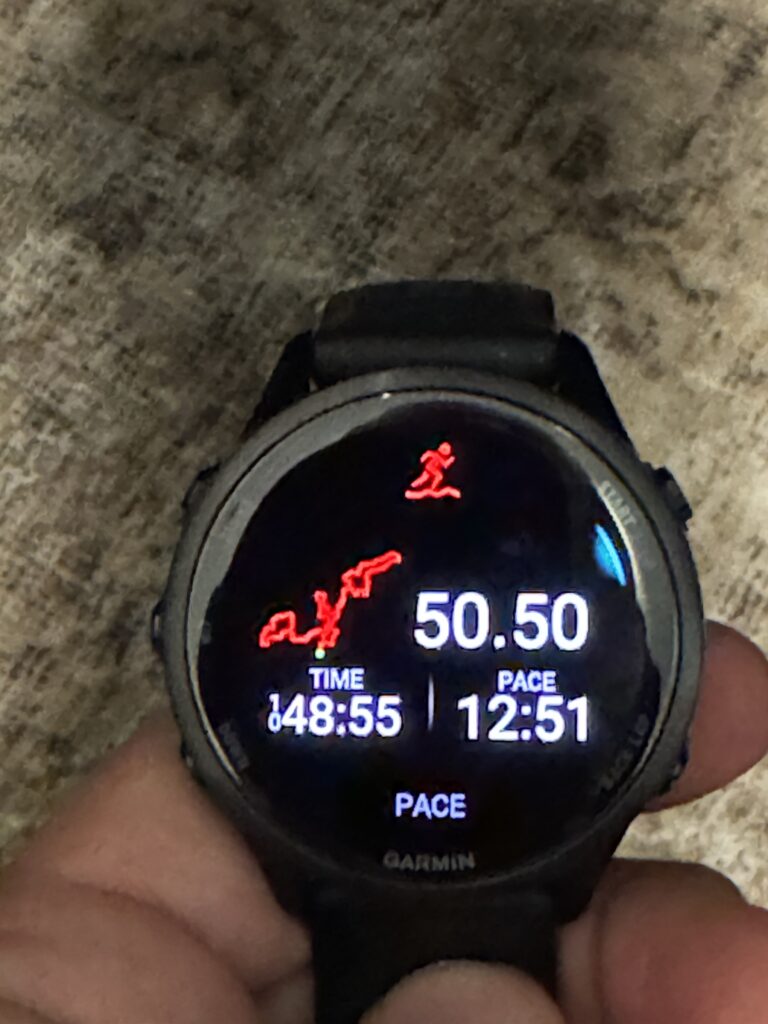
The GPS total from the Garmin Forerunner 970
I am used to GPS watches showing further distances than a race which has to do with the slight variation of GPS readings as well as not running the tangents in a race (the shortest distance on the course). Given that it was a trail race, the tree cover could have hampered it a bit but I was surprised to find that, had I not gotten lost, the Forerunner 970 would have been dead-on for the race distance.
If I had only used the Garmin Epix Pro, I would have had to run an additional half mile after the race to actually get to 50 miles on the watch. 🙂 And I totally would have done that – got to get those Garmin distance badges!
So, Which One Did I Prefer for the Race?
The Garmin Forerunner 970 has a 1.4″ display while the Epix Pro has a 1.3″ so that means that the display shows a little larger and the Forerunner 970 is definitely brighter. It is also lightweight and very comfortable.
While I have loved using my Epix Pro, it sits a little high on the wrist and it moves a bit given its weight, unless I strap it down harder on my wrist. So, I definitely enjoyed using the Forerunner 970 over the Epix Pro for my 50 mile race.
It will take getting used to a bit because the UI is different between the watches. Still, I was very pleased with using the Garmin Forerunner 970 in my race – in fact, it was my very first run with the watch so that was a bit risky but it worked out great (in large part thanks to Garmin’s setting migration feature that ported over my settings from my Epix Pro to the Forerunner 970).
Now, the bad news is that Garmin went an upped the price $150 over the Garmin Forerunner 965’s launch price. But, it is right on part with what you can get the Epix Pro for today so I think that, unless you absolutely need 24+ hours of GPS usage for an activity, you would be better off with the Forerunner 970. Even with the current sales on the Fenix 8, the Forerunner 970 is still cheaper and now comes with premium materials and even more features than the Fenix 8 currently has.
I will be doing more on the Garmin Forerunner 970 as I use it more (still in active recovery so not back to training just yet) as well as a more in-depth post on the 50 mile race. It was actually my second 50 mile race in 2 weeks so more on all that!

